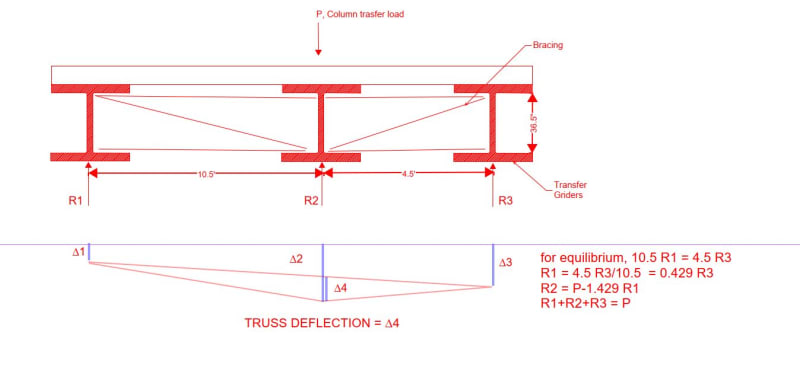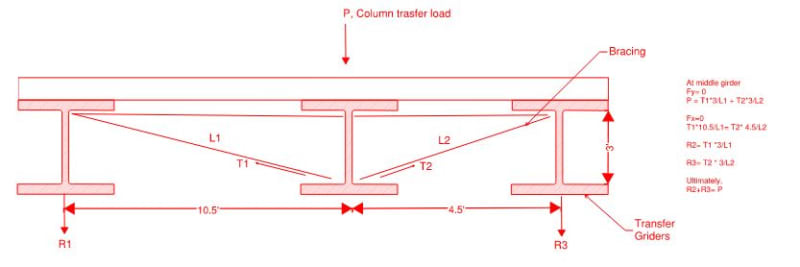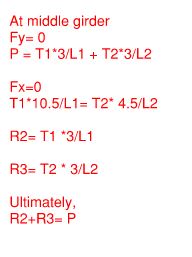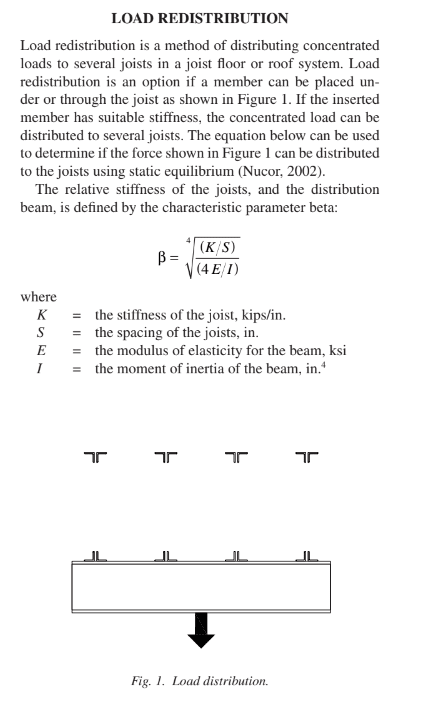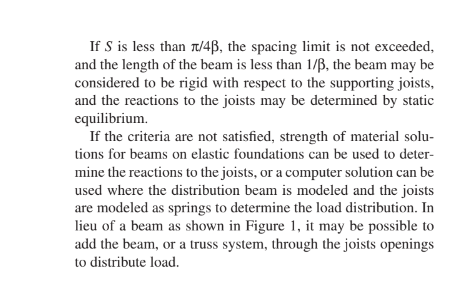GODs HAT
Structural
- Apr 3, 2024
- 6
I'm designing a transfer girder which has a tight deflection criteria and the depth of girder is restricted by some ARCH constrains. I'm wandering into a idea of using 3 identical parallel girders( transfer column sits on middle girder)to distribute the column loads and use the stiffness of all three girders combined. I'm thinking of using tie bracing to distribute the load along three girders and engage the stiffness of all three girders. My question is that if my assumption is valid that the total downward load from transfer column will be resisted by the stiffness of all three girders combined as long my bracing is good in strength to transfer the load to the outer girders? If not, what stiffness is available for the deflection at the middle girder?

